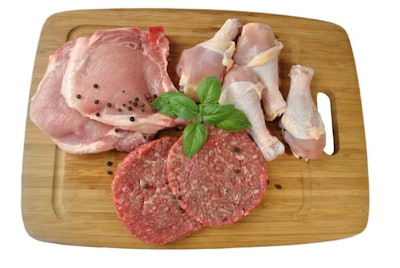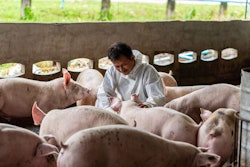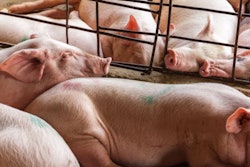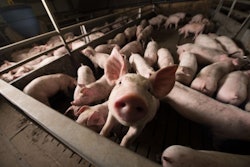
But don’t expect the markets to be calm, as drivers of change will remain in place, new report says
Global animal protein markets will begin to settle in 2022, but many drivers of change – higher input costs, transition to more sustainable protein, biosecurity and COVID-19 – will remain, according to a new Rabobank report.
Animal protein prices are expected to remain firm in 2022, with some exceptions, and expansion is expected in all major producing regions for the main species, Rabobank said in its Global Animal Protein Outlook 2022. Pork, poultry and aquaculture are expected to see the biggest growth, while beef and wild seafood are expected to contract slightly.
China’s ongoing pig herd recovery is expected to be the largest single driver of global market growth in 2022, followed by Southeast Asia, North America and Brazil. Limited growth is expected in Australia, New Zealand and Europe.
Feed prices to stabilize, margins remain tight
After a year of high and volatile feed prices, 2022 is expected to bring stabilization, but margins will remain tight. In North America, feed prices will remain at higher levels compared with the past five years and export levels are expected to be the second highest on record.
“While robust export and domestic demand will support prices, the building of soybean and corn stocks will keep a lid on price levels,” the report said.
In Brazil, attractive prices and depreciation of the real will drive increased plantings of soybeans and safrinha corn.
In Europe, the inclusion of wheat in feed will rise while barley inclusion will fall. High prices create potential for the grains area to expand in 2022-23.
Australia’s 2021 winter crop is expected to be 25% above the five-year average, and feed grain prices will be driven by global demand.
China’s corn production is expected to rebound, but prices are expected to stay relatively high.
“Weak livestock farming margins and government policies restrict soybean meal use in feed, and we therefore expect soymeal prices to stay muted after Q2 2022, with global dynamics representing major uncertainties,” Rabobank said.
Hot topics for 2022
Rabobank said the hot topics it will be tracking the in animal protein market in 2022 are inflation, sustainability and African swine fever (ASF).
The rising costs of labor, freight, energy and feed create pressure along the animal protein supply chain. The question looming over the market is, “Will food price inflation compensate for rising cost of production pressures?” the report said. Where the cost pass-through ends up in 2022 depends on what happens with the production costs that have risen in 2021 and where the pricing power sits in the animal protein chains.
“On balance, it is hard to see most cost pressures being materially alleviated in 2022, although there will be important regional variations,” the report said.
Improvements to sustainability have costs, Rabobank said, so incentives are needed to drive those changes at scale, while alignment with the whole supply chain will be needed to meet goals.
“Improved production efficiency, brand reputation, capital access and regulatory pressure will likely provide more powerful motivation for animal protein supply chains to scale up sustainability enhancements,” the report said.
In Asia, the main uncertainty for animal protein markets remains ASF, but the impact of the disease has declined. China and Vietnam are recovering from previous outbreaks, but the Philippines, Indonesia, South Korea and India are still seeing pork production affected. ASF cases remain high along the Germany-Poland border, creating challenges for the EU. Outbreaks continue in Russia, and the Americas remain on high alert for the disease after its detection in Haiti and the Dominican Republic.
Key animal protein-producing regions
North America: U.S. broiler supply is expected to rebound and turkey and egg producers should see improved demand, while Mexico will see lower demand for poultry. Beef production is expected to decline and packing capacity bottlenecks will ease. Uncertainty will keep the U.S. pork market growth low while values will remain strong in Canada and the U.S. Demand in Mexico may be challenged while Canada could see improvement.
Brazil: China will remain a key export market for Brazil. Feed and grain prices will remain high early in 2022 but could ease in the second half of the year. Growth in poultry production is expected to continue.
Europe: The pork and beef markets will remain tight; the pork market is expected to gradually rebalance while tight supply of the global beef market will support beef prices in Europe. The region’s poultry market is expected to gradually recover from COVID-19-related disruptions. Avian influenza is expected to remain a challenge but the EU is expected to export more poultry products in 2022. Pork exports are expected to fall 10% year over year due to China’s lower demand.
China: China’s pork production is expected to continue its recovery in 2022 and is estimated to increase 20% to 30% year over year. As demand has not recovered at the same pace, there is an oversupply, but demand is also expected to improve in 2022. Low pork prices are leading to lower demand for poultry as white broiler production has rapidly grown in 2021. Beef supply is expected to remain tight, causing imports to increase.
Southeast Asia: Poultry production in the region has declined for two years in a row but is expected to grow in 2022, led by Thailand and Vietnam. Poultry consumption is also expected to rise, and the trade outlook will improve. Pork demand in the region is expected to improve in 2022 as countries begin to recover from ASF. Pork production in Vietnam will continue to recover, and the Philippines will begin to see recovery as a result of government intervention.
India: India’s broiler production will grow in 2022, but at a slower pace than in 2021, with feed availability and high prices pressuring margins.

















